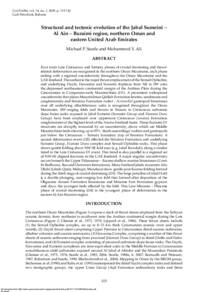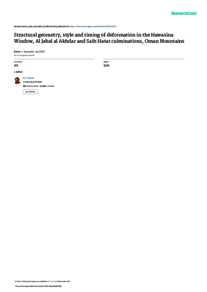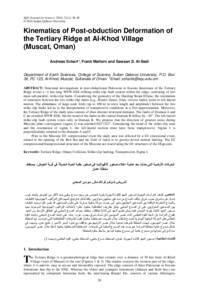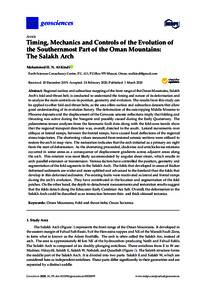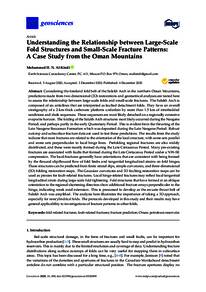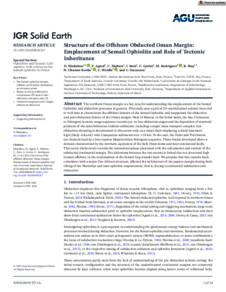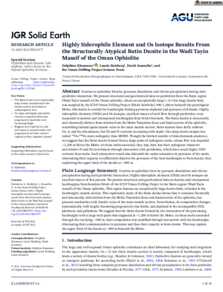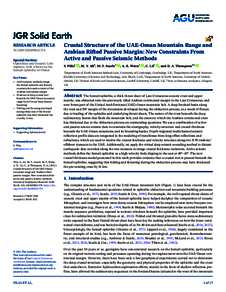وثيقة
Structural and tectonic evolution of the Jabal Sumeini-Al Ain-Buraimi region, Northern Oman and Eastern United Arab Emirates.
المعرف
DOI: 10.2113/geoarabia1401115
المساهمون
Ali, Mohammed Y., مؤلف
الناشر
Gulf Petrolink.
ميلادي
2009-02
اللغة
الأنجليزية
الملخص الإنجليزي
Four main Late Cretaceous and Tertiary phases of crustal shortening and thrust-related deformation are recognised in the northern Oman Mountains, each phase ending with a regional unconformity throughout the Oman Mountains and the UAE foreland. The earliest is the major thrust emplacement of the Semail Ophiolite, and underlying Haybi, Hawasina and Sumeini duplexes from NE to SW onto the depressed northeastern continental margin of the Arabian Plate during the Cenomanian to Campanian-early Maastrichtian (D1). A prominent widespread unconformity that places Maastrichtian Qahlah Formation laterite, sandstones and conglomerates and Simsima Formation rudist - Acteonellid gastropod limestones over all underlying allochthonous units is recognised throughout the Oman Mountains. SW-verging folds and thrusts in Triassic to Cretaceous carbonate slope facies rocks exposed in Jabal Sumeini (Sumeini Group and Harnrat Duru Group) have been emplaced over uppermost Cretaceous Juweiza Formation conglomerates at the highest level of the Aruma. foreland basin. These Sumeini D1 structures are abruptly truncated by an unconformity, above which are Middle Maastrichtian beds showing up to 95% 'death assemblage' rudists and gastropods just below the Cretaceous - Tertiary boundary (top of Simsima Formation). A second deformation event (D2) affected the Simsima Formation and underlying Sumeini Group, Hamrat Duru complex and Semail Ophiolite rocks. This phase shows gentle folding about NW-SE fold axes (e.g. Jabal Rawdah), along a similar trend to the Late Cretaceous D1 event. This trend is also parallel to a regional set of NW-SE aligned fractures in the UAE foreland. A major angular unconformity occurs beneath the Upper Palaeocene - Eocene shallow-marine limestones (Umm Er Radhuma, Rus and Dammam formations). Many foreland jabals in eastern Abu Dhabi (Jabals Qatar, Malaqet, Mundasa) show gentle post-Eocene folding formed during the third stage of crustal shortening (D3). The large perichne of Jabal Hafit is a double-plunging, east-verging box fold that formed after deposition of the Oligocene Asmari Formation limestones and Miocene Fars Formation gypsum and clays, the youngest beds affected by the fold. This Late Miocene - Pliocene phase of crustal shortening (D4) is the youngest phase of deformation in the eastern Al Ain-Buraimi region.
المجموعة
ISSN
1025-6059
URL المصدر
قالب العنصر
مقالات الدوريات

